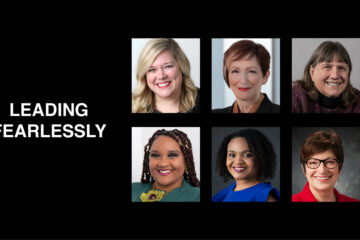Editor’s note: To usher in the new year, we asked more than a dozen women who live across the state to write about their hopes, dreams, and things to keep in mind for women’s advancement and gender equity. Read the full collection of columns here.
By Claudia Schabel

Did you know that by 2060, women of color will make up the majority of all women in the U.S. – with the greatest representation coming from Latina/x, Black, Asian and Native/Indigenous women, respectively?
As of 2020, women of color only made up 18% of entry-level positions in the workforce, but their representation at work is projected to increase rapidly in the decades to come. Meanwhile, they still face significant challenges navigating the workplace.
For them, it can often be described as a “minefield,” fraught with politics, biases, discrimination and microaggressions. Being a woman of color has been referred to as a “double-bind.” With intersections of gender and racial/ethnic identities, they often confront a number of unique challenges in the workplace and their everyday experiences are not improving.
Many women of color leave their jobs due to a lack of support for their advancement and, in many cases, workplace bias that prevents them from growing in their careers – negatively impacting their well-being as they are twice as likely as men to be burned out, more than twice as likely as men to report feeling negatively about their job, and almost three times as likely as men to say they’ve struggled to concentrate at work in the past few months due to stress.
While progress is being made, there is still a long way to go before women of color can reach their full potential in the workforce.
Given that they are increasingly making up a larger portion of the workforce, this topic is increasingly important for employers to address by investing more time and resources in meaningful DEI programs to ensure women of color are empowered, valued, have pathways to advancement and are compensated fairly.
Sponsorship, mentoring and allyship programs are examples that many women of color leverage but they need to impact participants at all employee levels to have lasting effect within organizations.
Organizations need to critically assess their own workforces and workplaces before determining which strategies to develop and implement for helping women of color succeed in the long term.
Claudia Schabel is the president and CEO of Schabel Solutions, a strategic DEI consulting firm.


